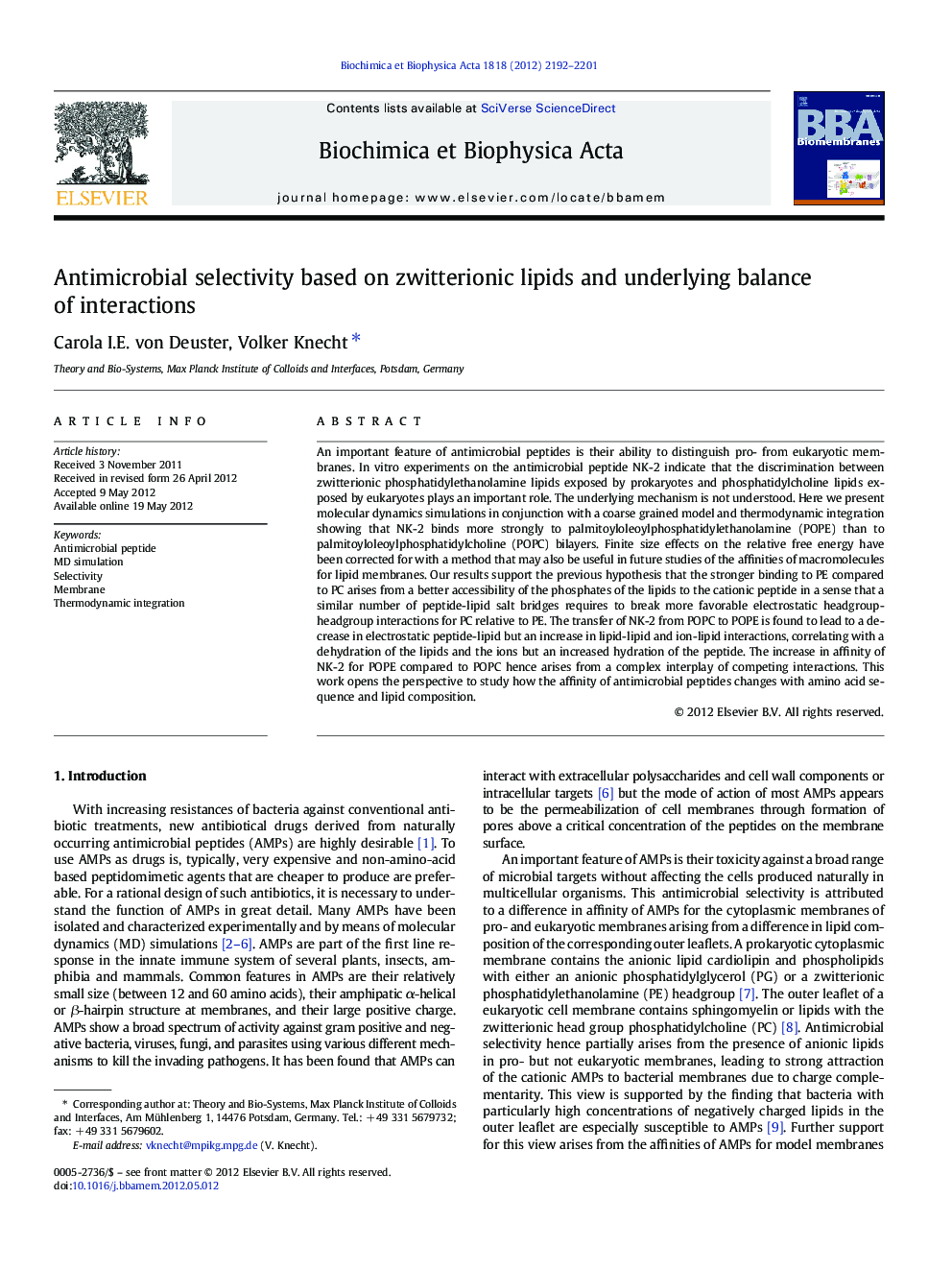| کد مقاله | کد نشریه | سال انتشار | مقاله انگلیسی | نسخه تمام متن |
|---|---|---|---|---|
| 1944444 | 1053211 | 2012 | 10 صفحه PDF | دانلود رایگان |

An important feature of antimicrobial peptides is their ability to distinguish pro- from eukaryotic membranes. In vitro experiments on the antimicrobial peptide NK-2 indicate that the discrimination between zwitterionic phosphatidylethanolamine lipids exposed by prokaryotes and phosphatidylcholine lipids exposed by eukaryotes plays an important role. The underlying mechanism is not understood. Here we present molecular dynamics simulations in conjunction with a coarse grained model and thermodynamic integration showing that NK-2 binds more strongly to palmitoyloleoylphosphatidylethanolamine (POPE) than to palmitoyloleoylphosphatidylcholine (POPC) bilayers. Finite size effects on the relative free energy have been corrected for with a method that may also be useful in future studies of the affinities of macromolecules for lipid membranes. Our results support the previous hypothesis that the stronger binding to PE compared to PC arises from a better accessibility of the phosphates of the lipids to the cationic peptide in a sense that a similar number of peptide-lipid salt bridges requires to break more favorable electrostatic headgroup-headgroup interactions for PC relative to PE. The transfer of NK-2 from POPC to POPE is found to lead to a decrease in electrostatic peptide-lipid but an increase in lipid-lipid and ion-lipid interactions, correlating with a dehydration of the lipids and the ions but an increased hydration of the peptide. The increase in affinity of NK-2 for POPE compared to POPC hence arises from a complex interplay of competing interactions. This work opens the perspective to study how the affinity of antimicrobial peptides changes with amino acid sequence and lipid composition.
► Antimicrobial peptide (AMP) NK-2 binds more strongly to POPE than to POPC bilayer.
► Stronger binding to PE opposed by electrostatic peptide-lipid interactions.
► Binding selectivity arises from subtle balance of interactions.
► Selective binding is crucial for recognition of prokaryotic membranes.
► Understanding AMPs is important for development of new antibiotical drugs.
Journal: Biochimica et Biophysica Acta (BBA) - Biomembranes - Volume 1818, Issue 9, September 2012, Pages 2192–2201